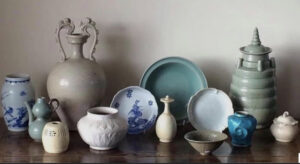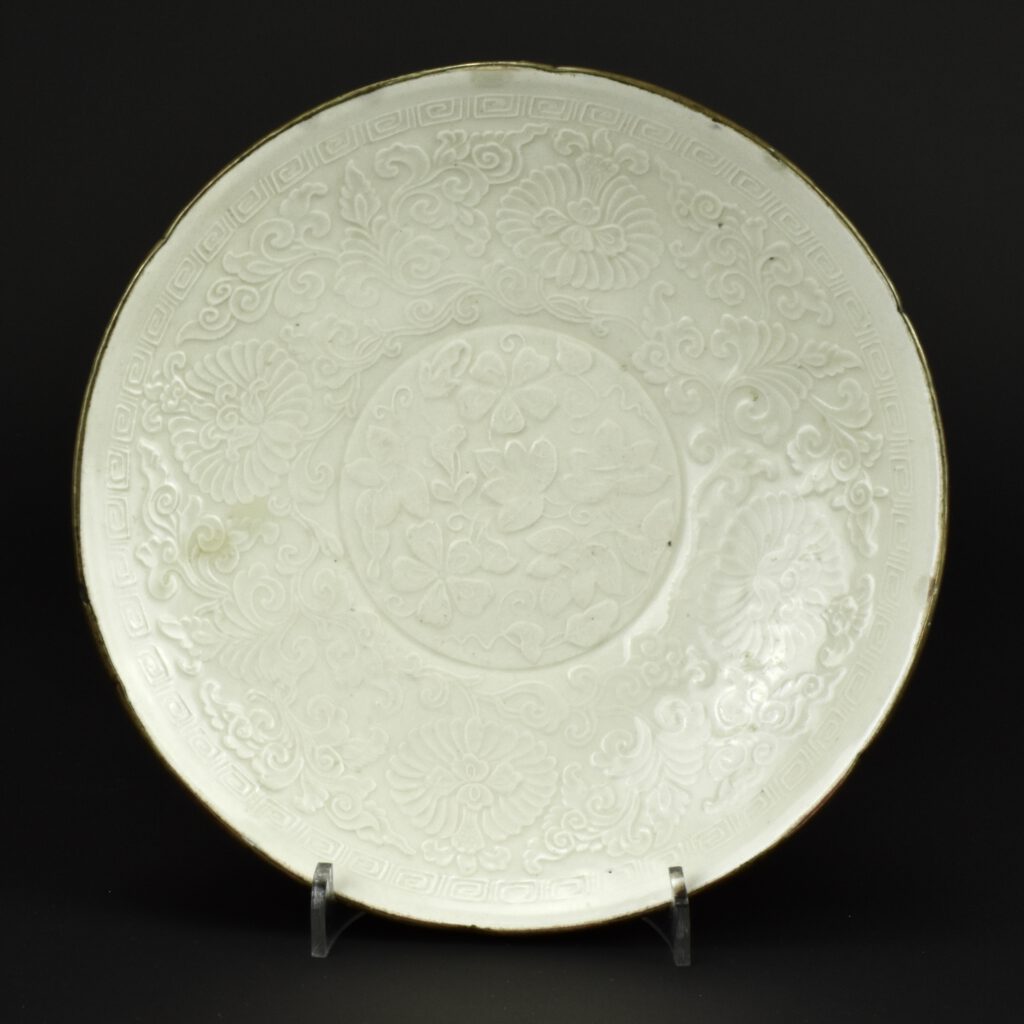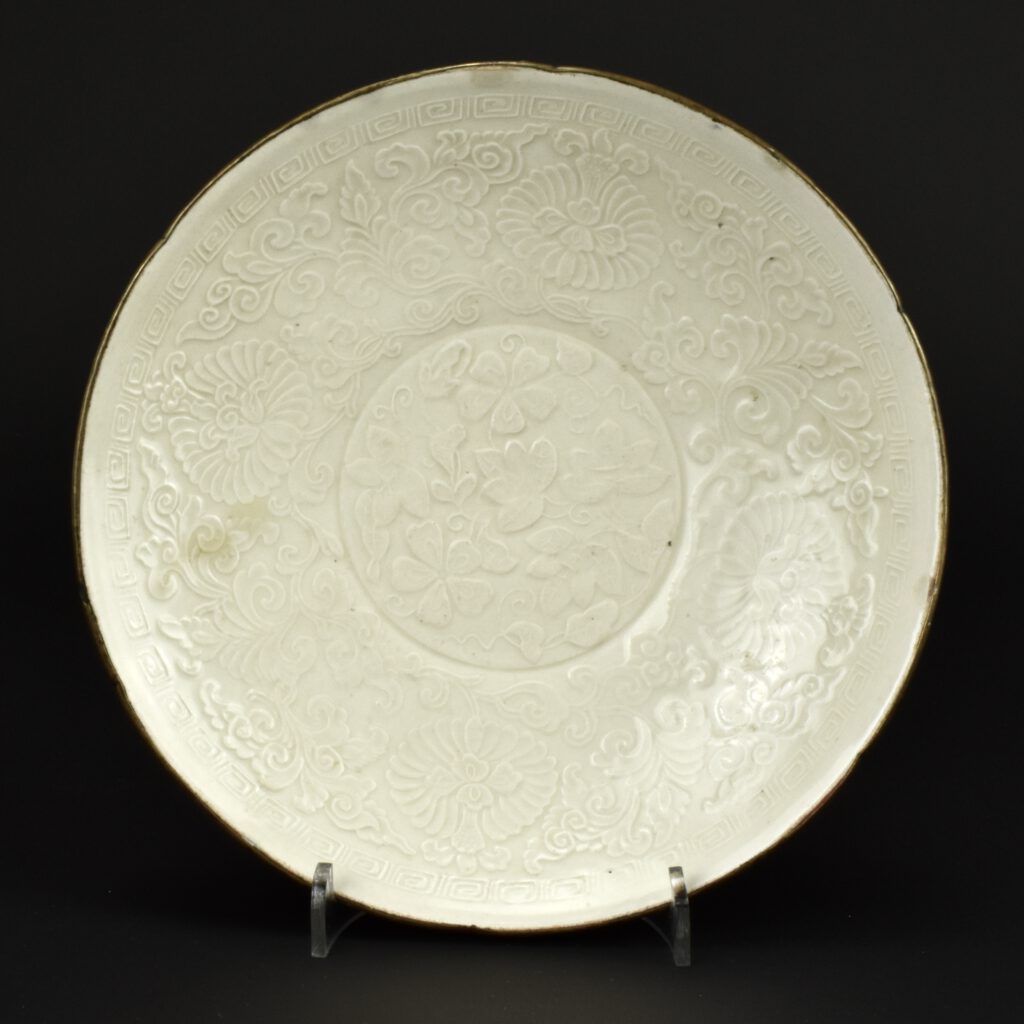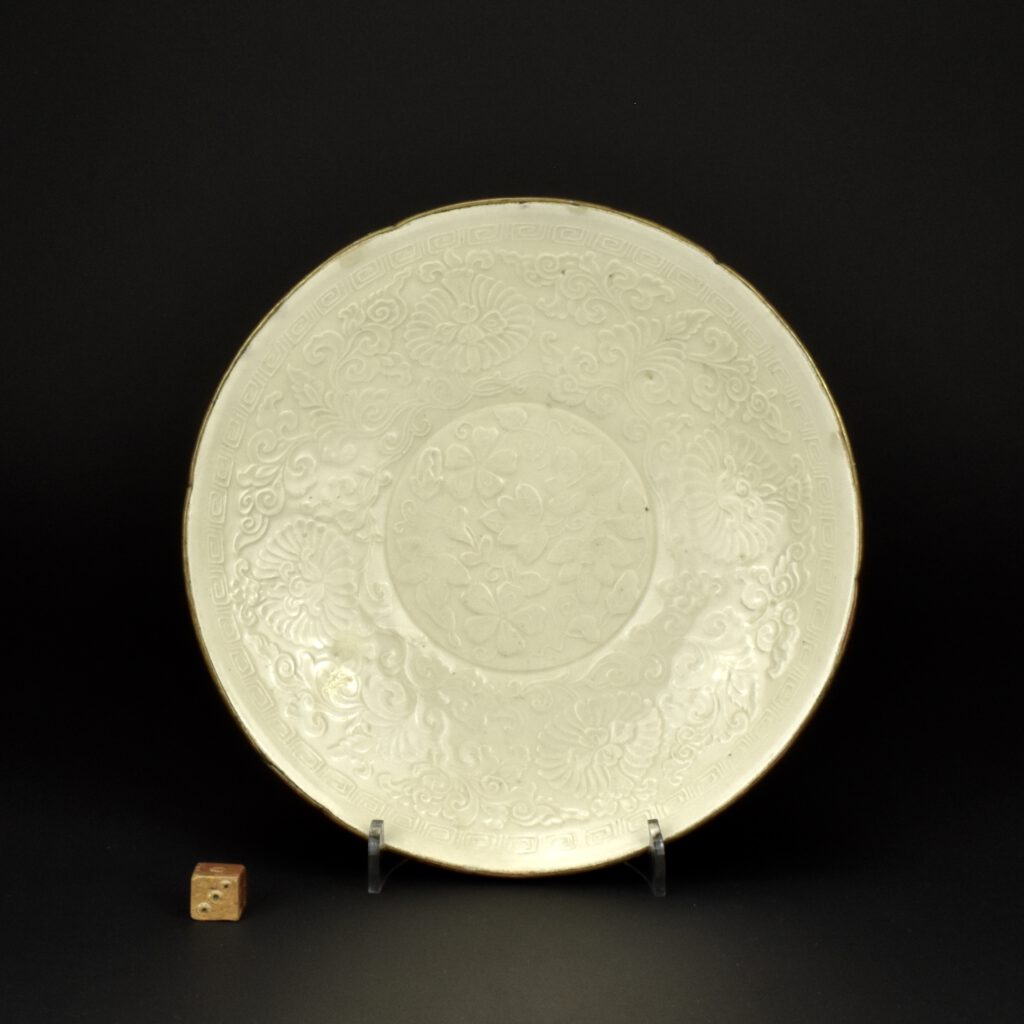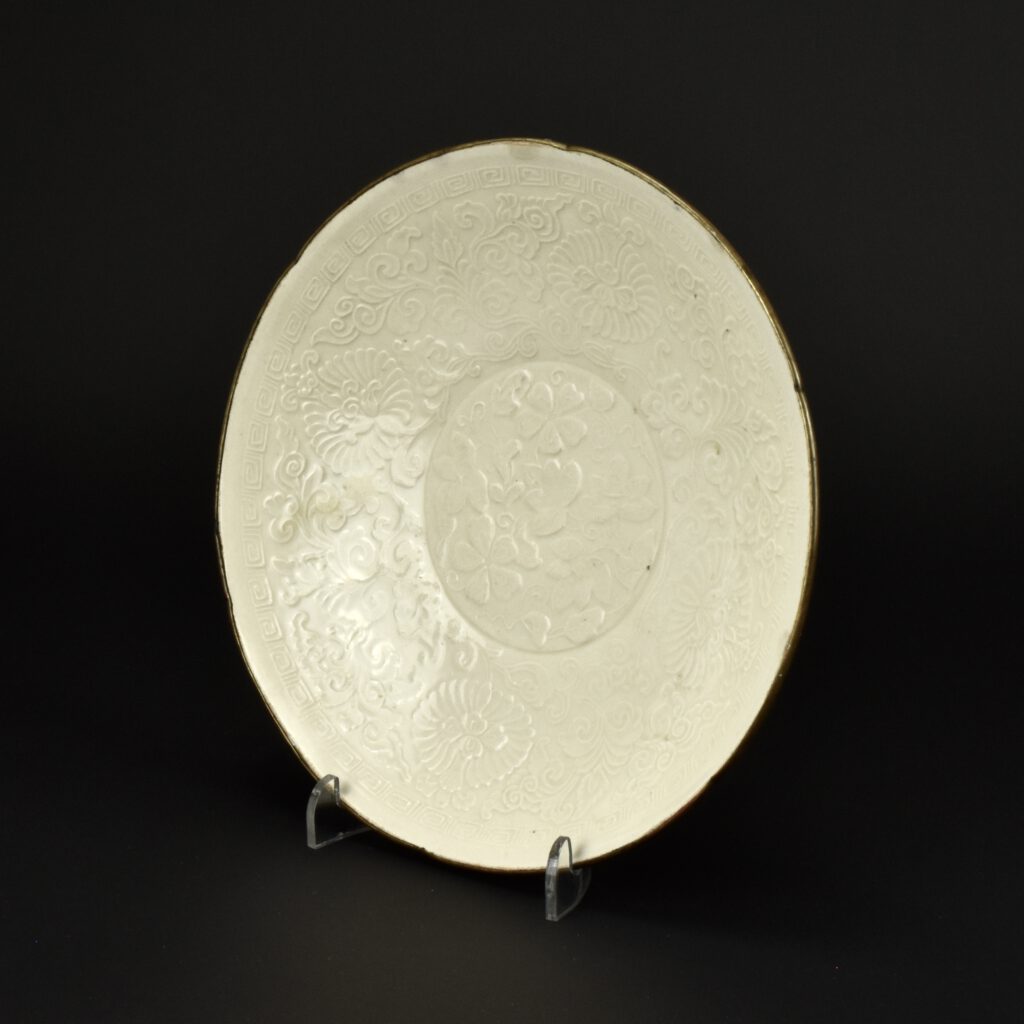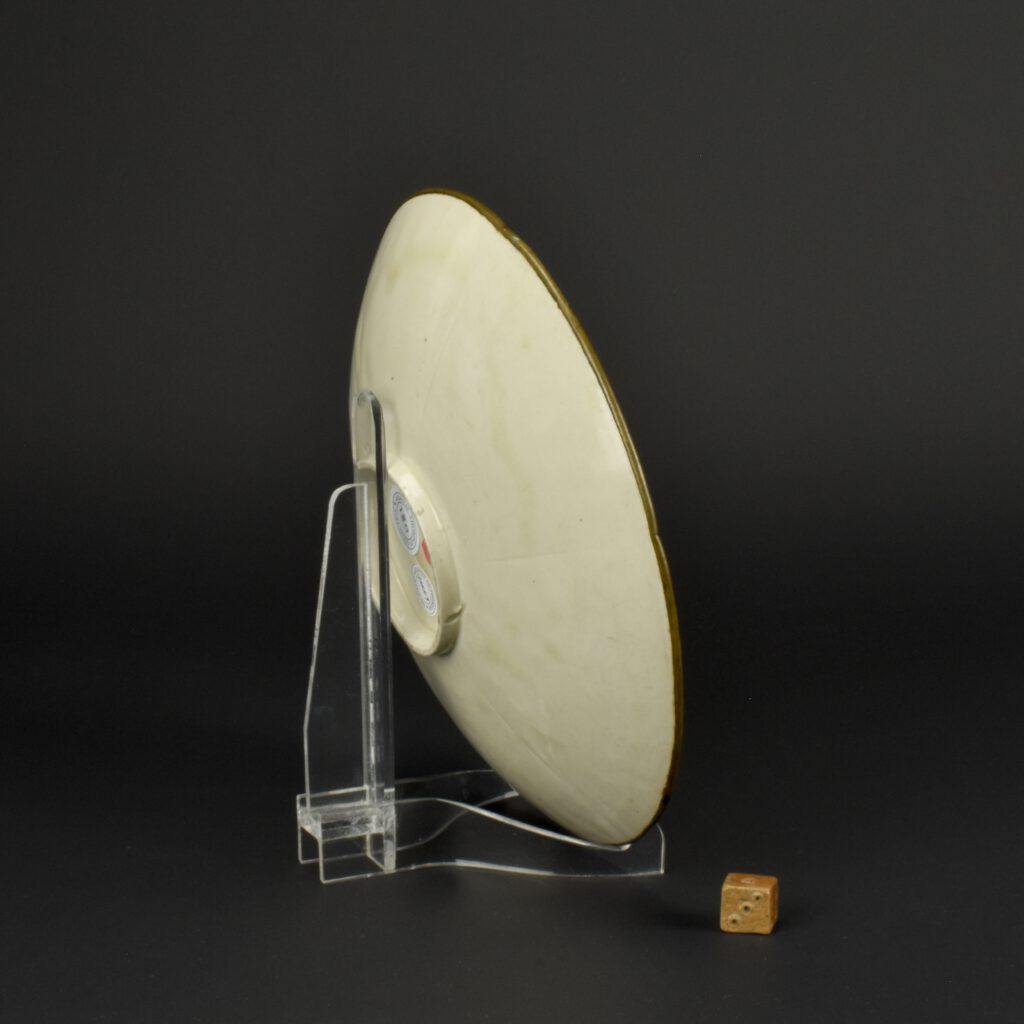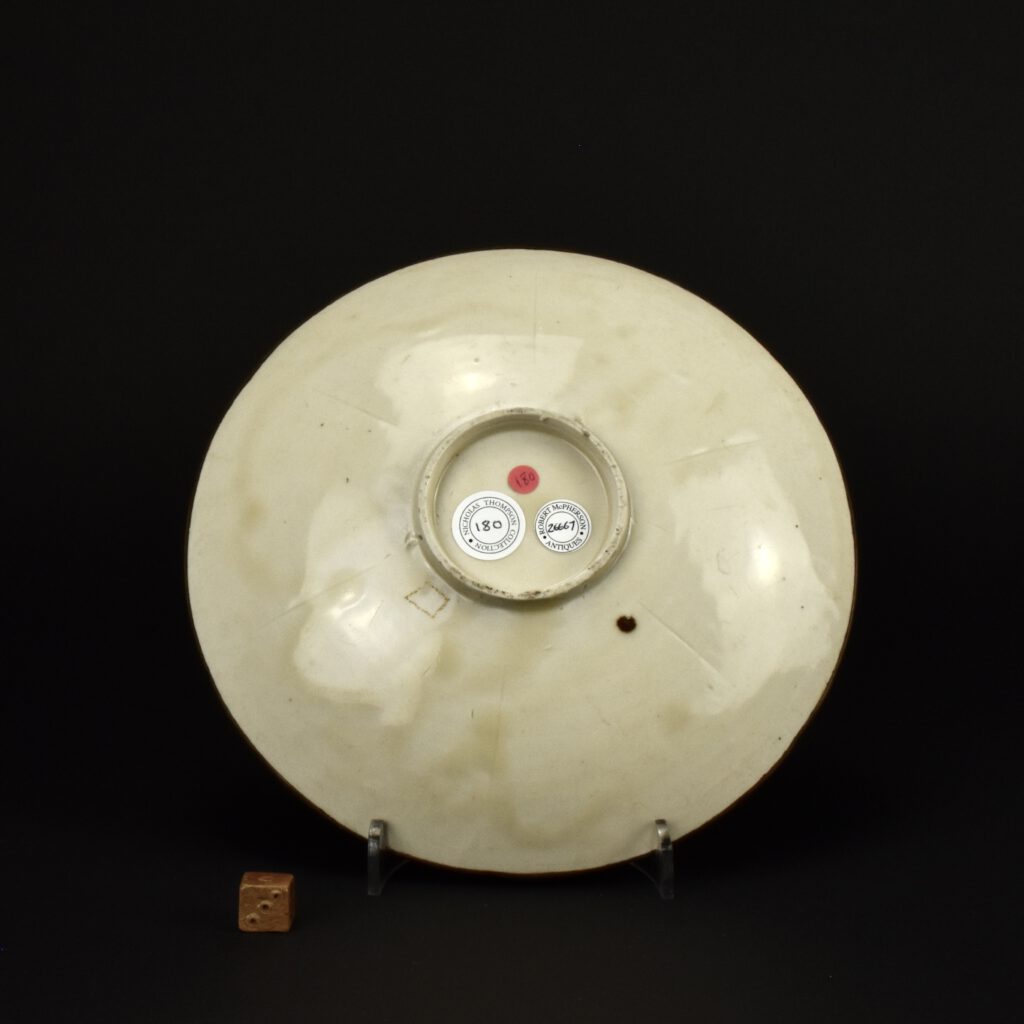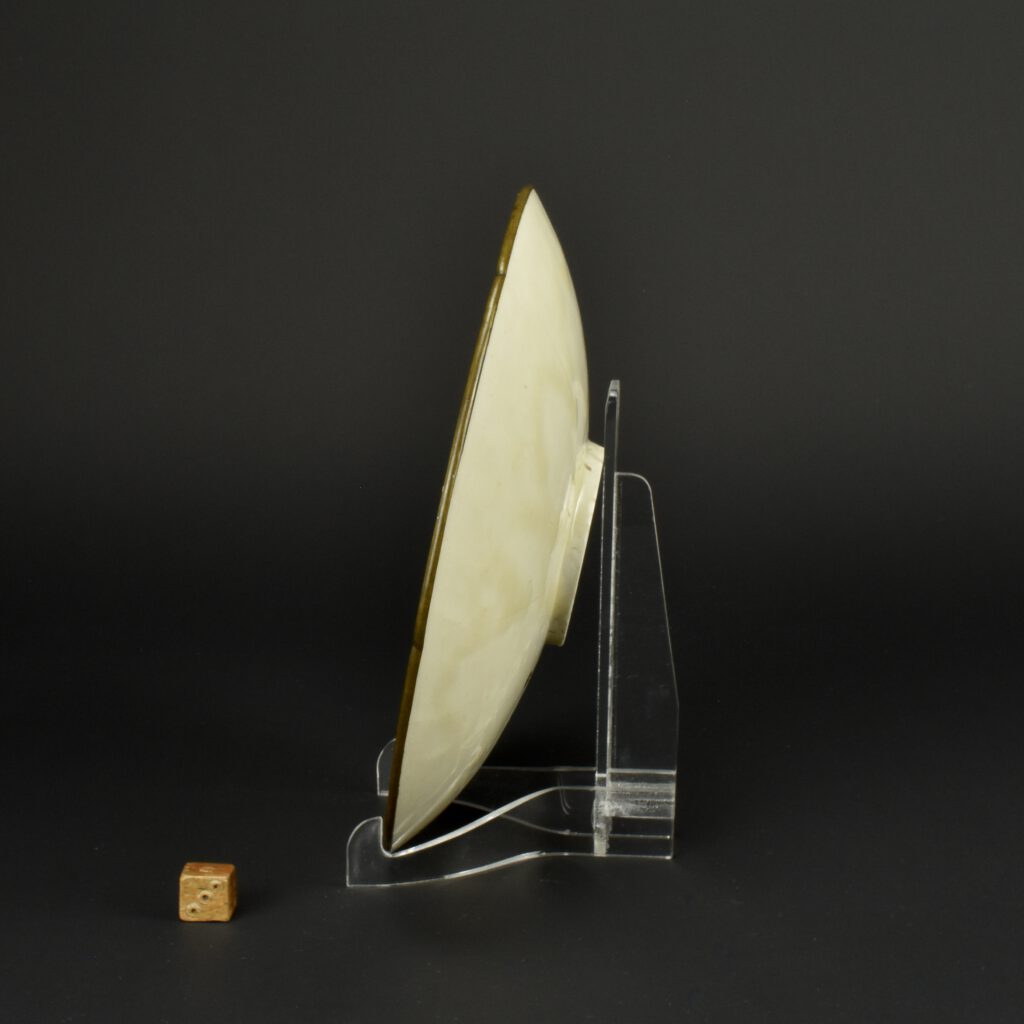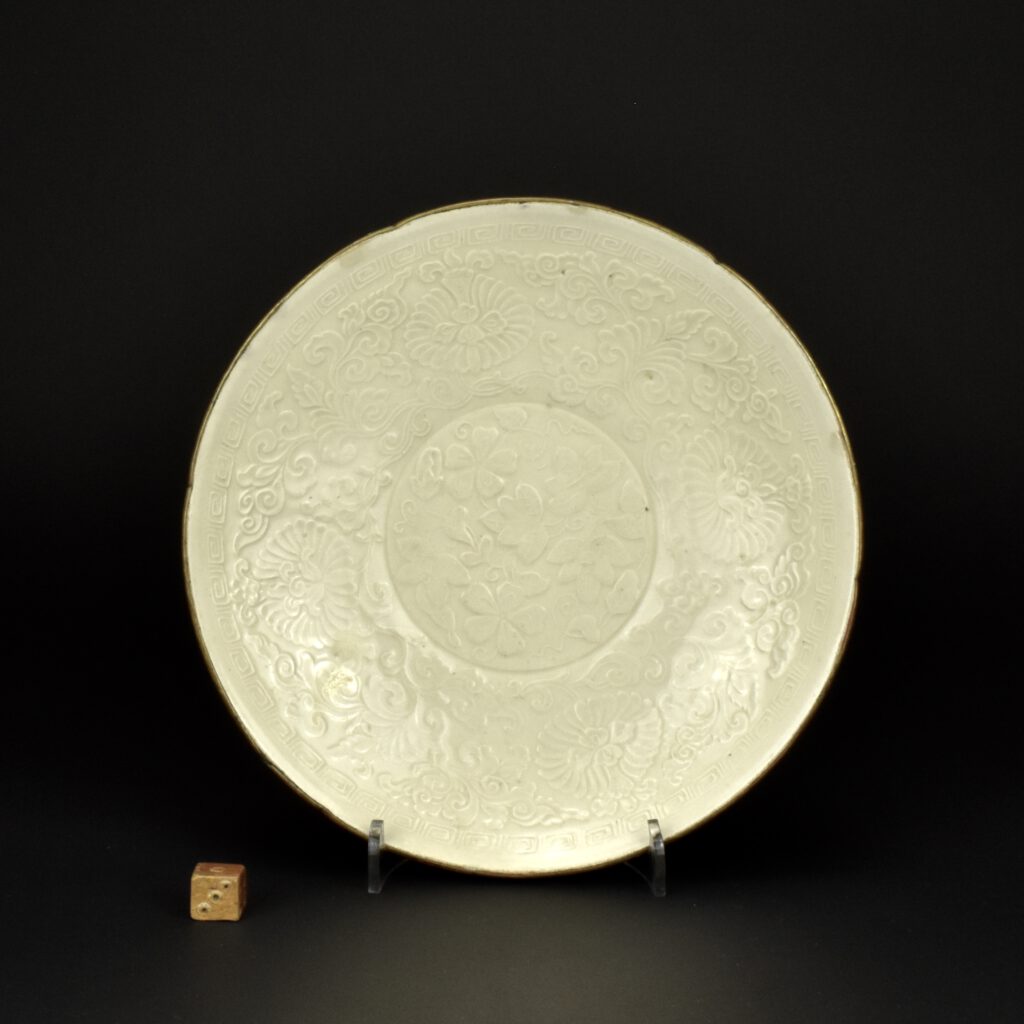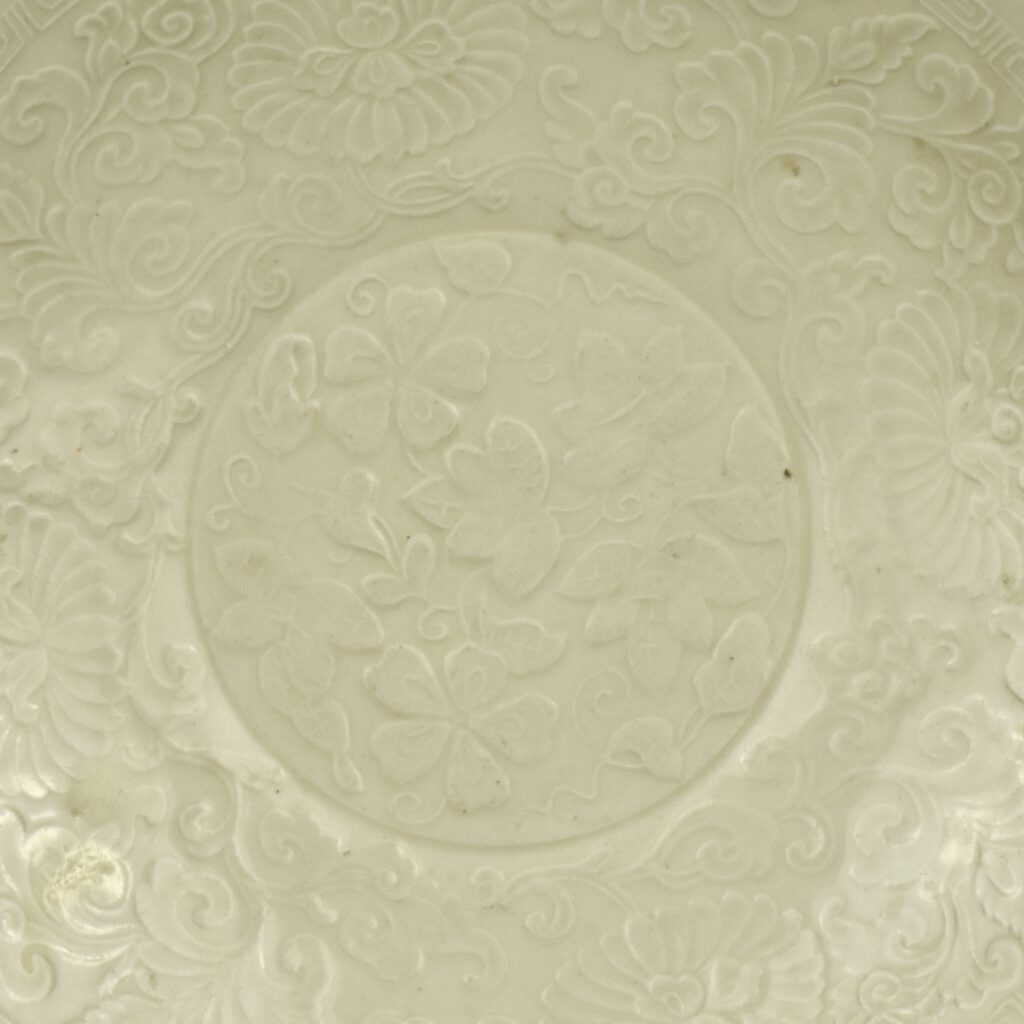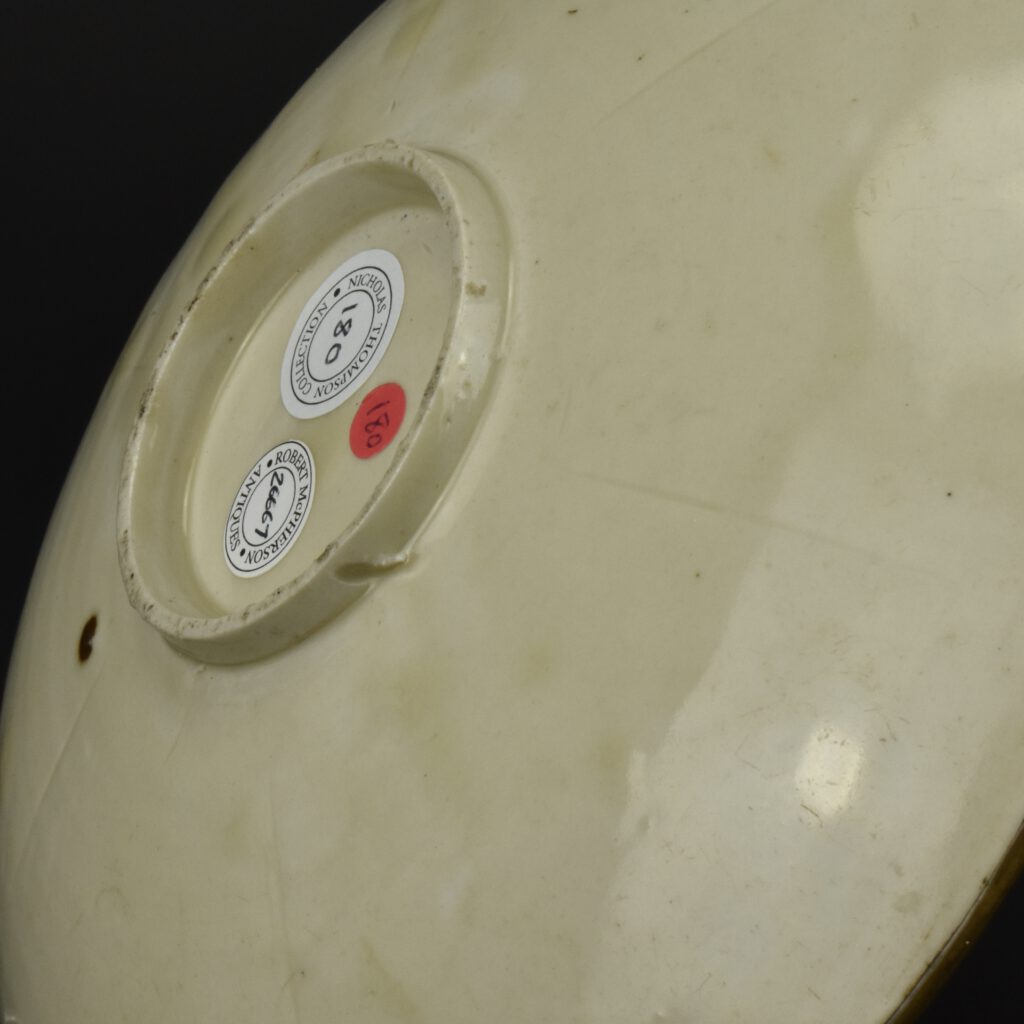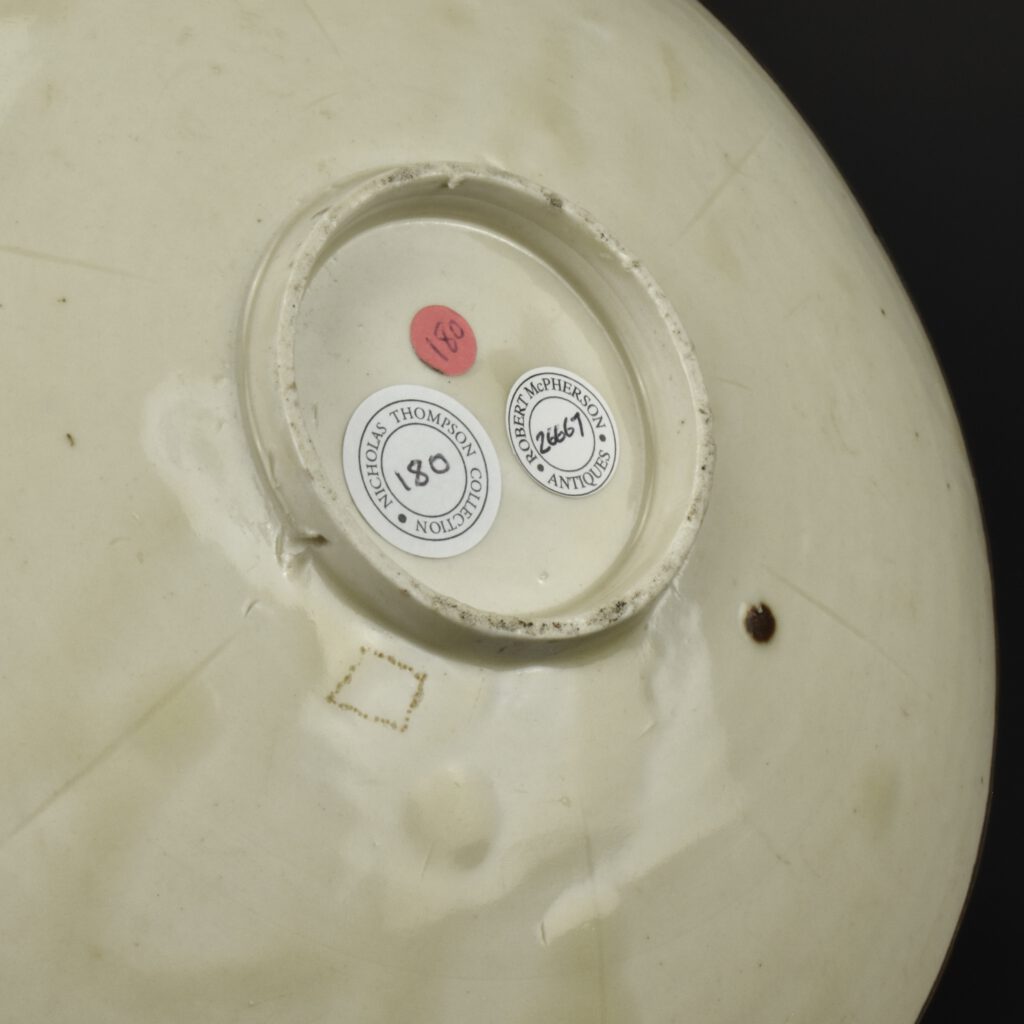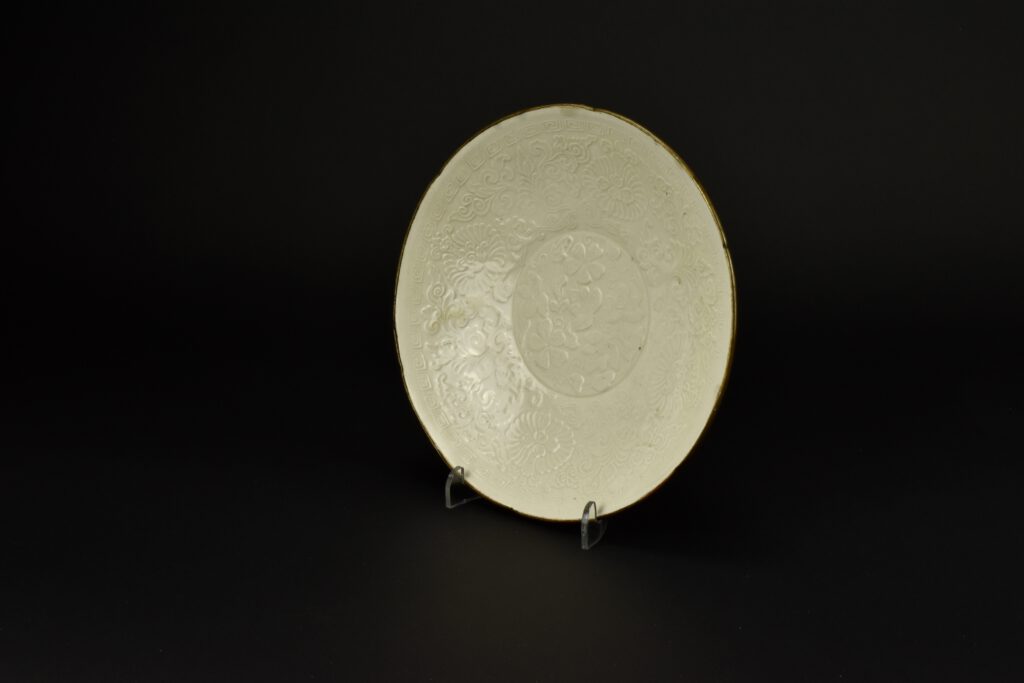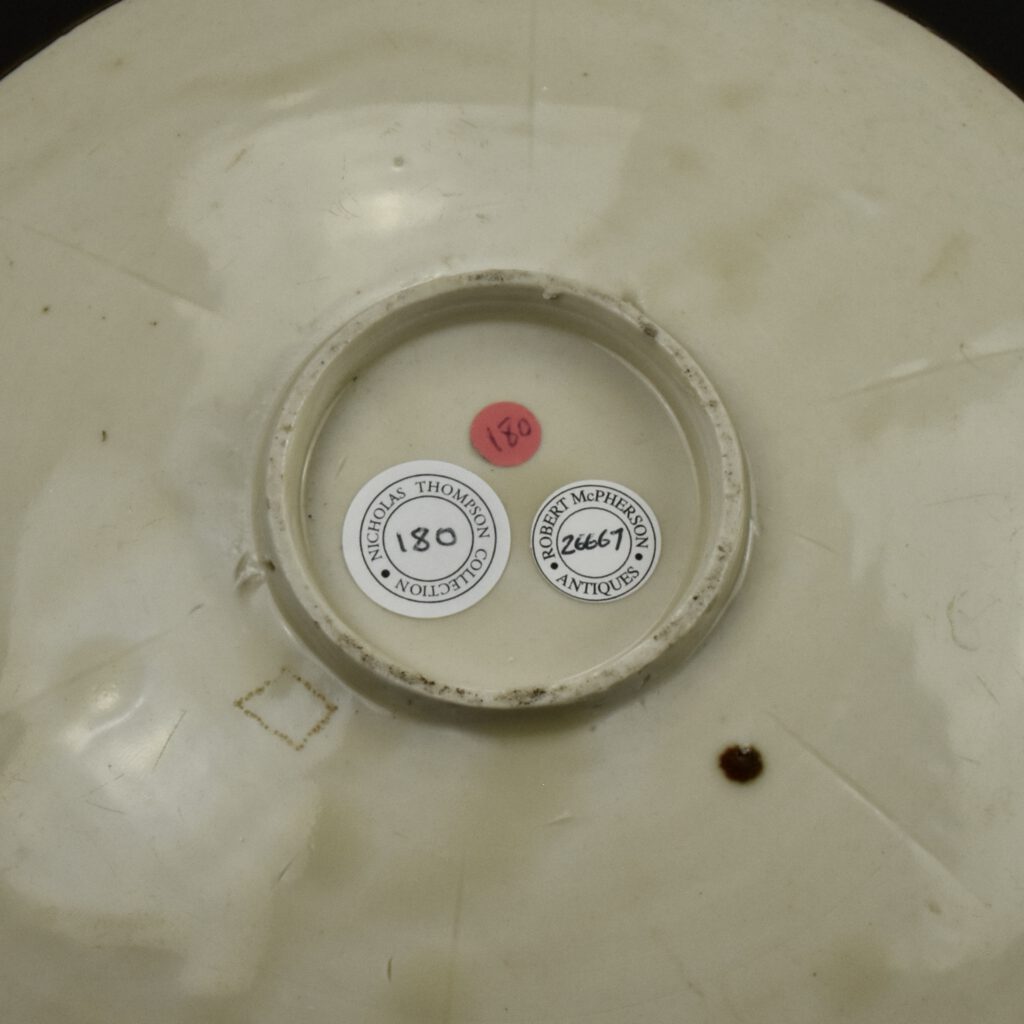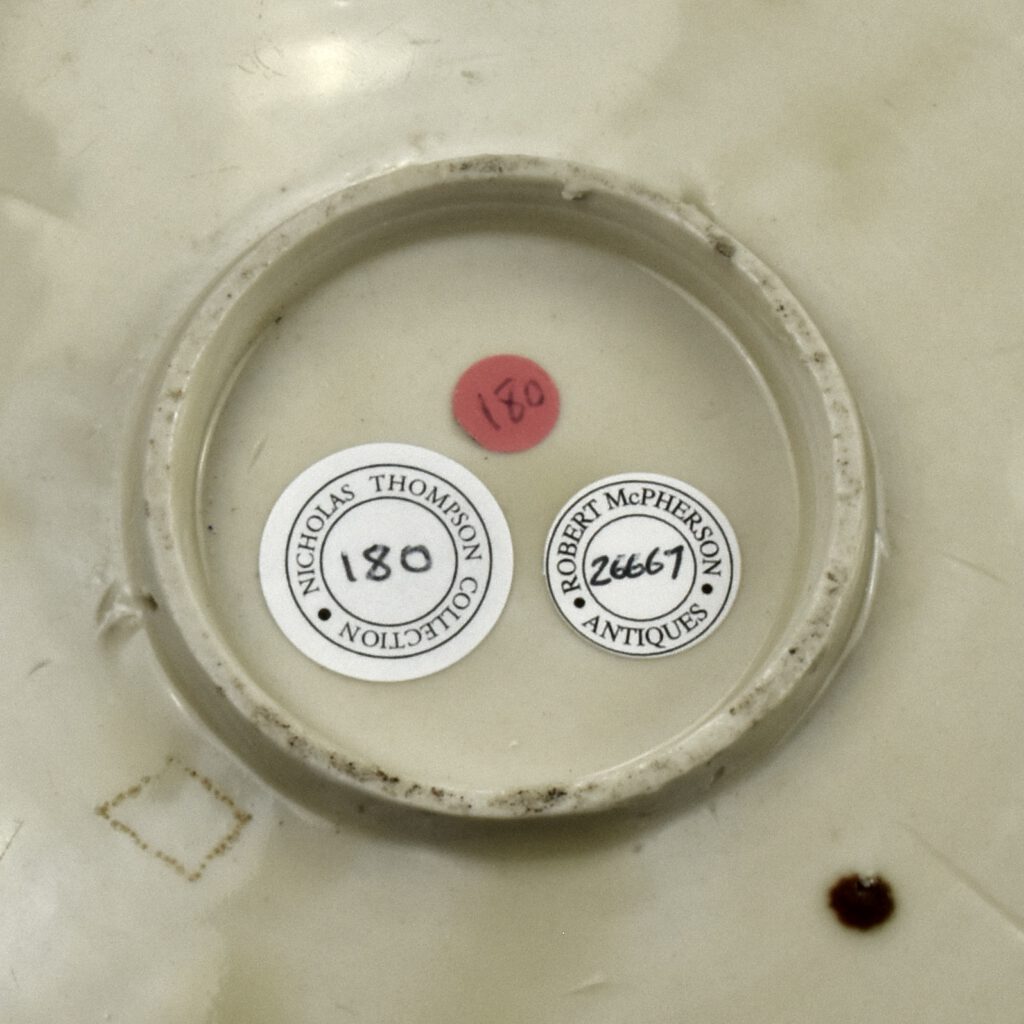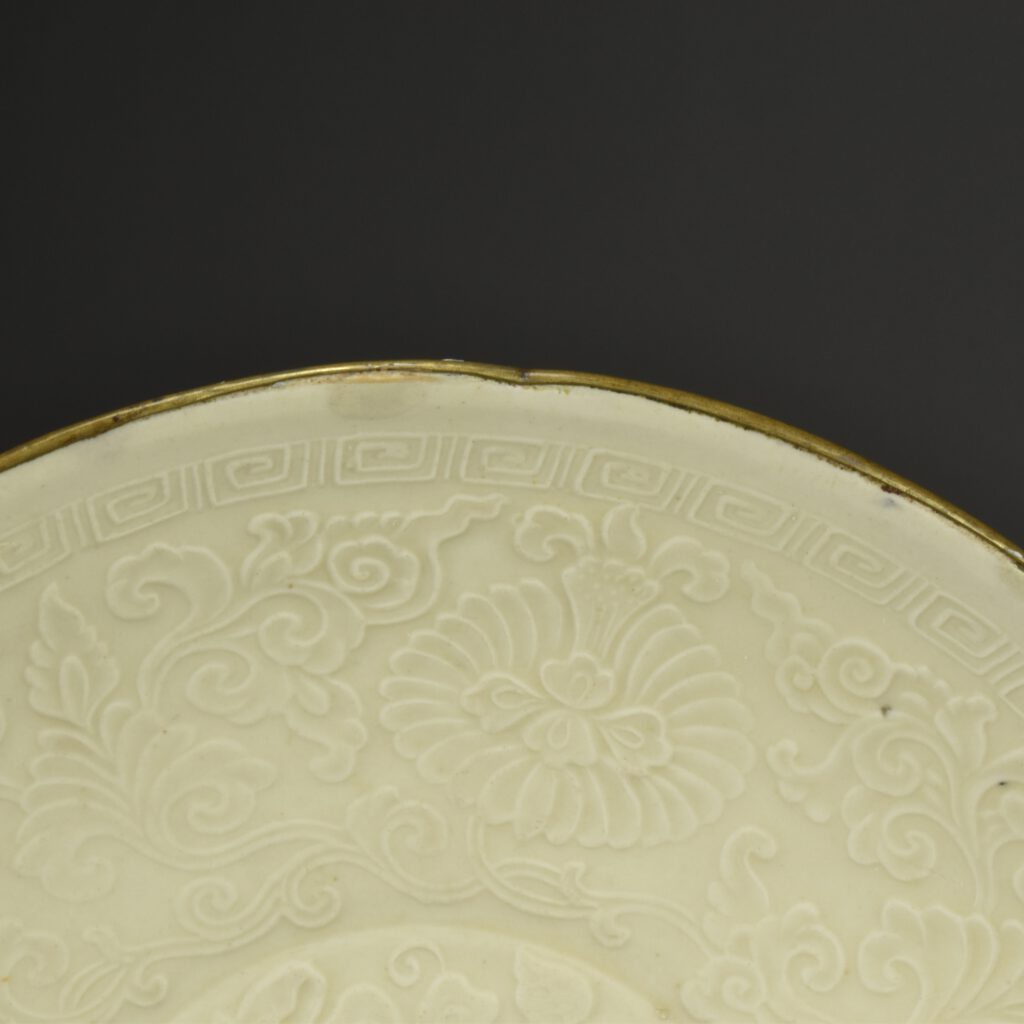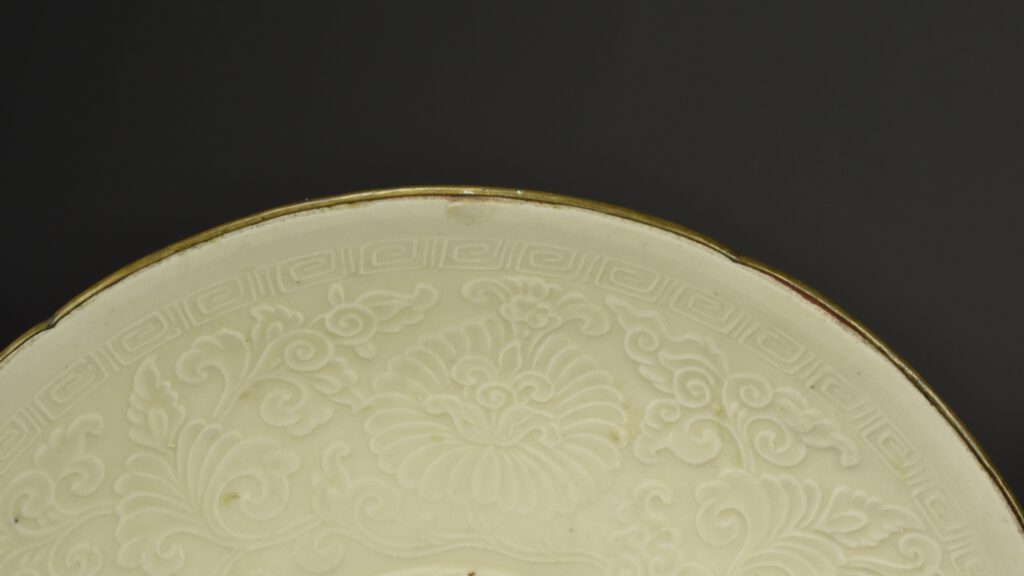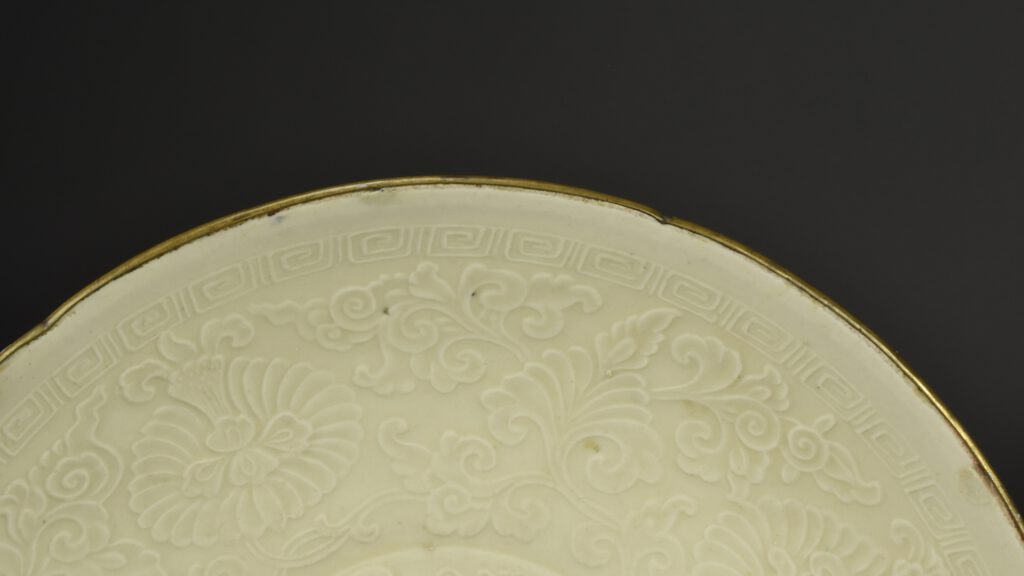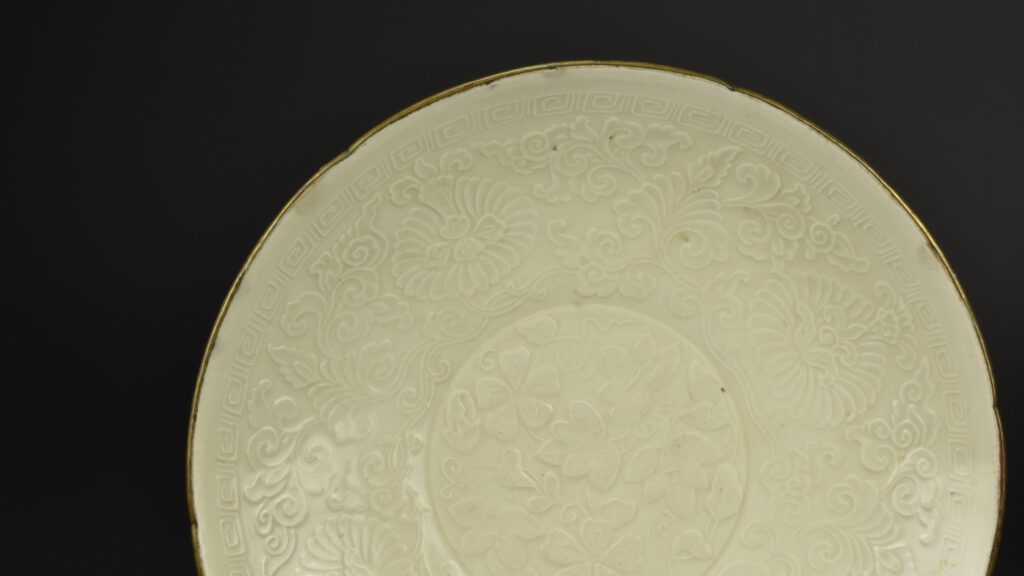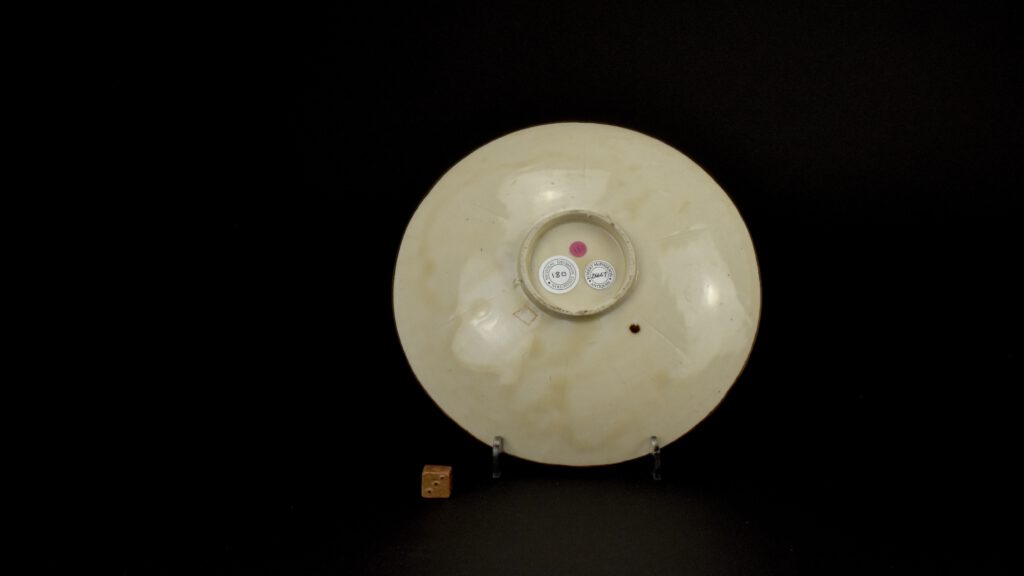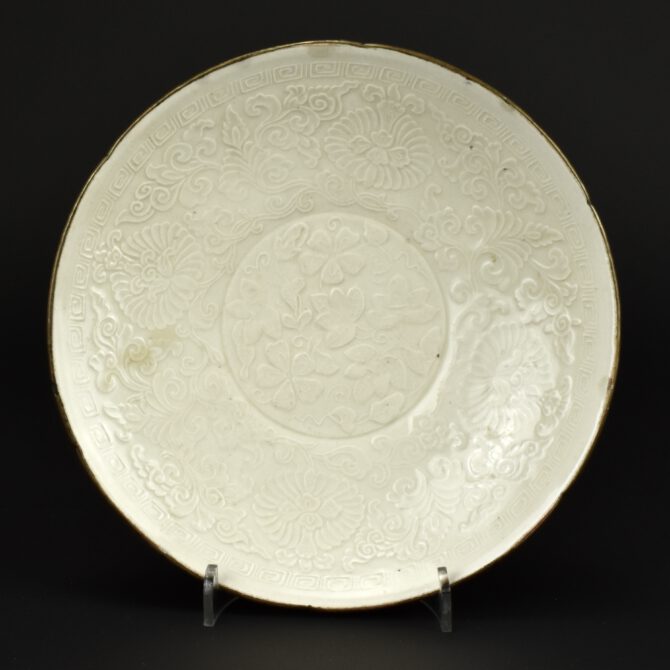
A Fine and Rare Song or Jin Dynasty Ding Ware Dish
A Fine Moulded Ding Ware Dish, Ding Kilns, Hebei Province, Jin Dynasty, 1115 – 1234. From the collection of Nicholas de la Mare Thompson (1928-2010). This Dingyao (Dingware) Dish is crisply moulded and covered with a thin creamy glaze that do not obscure or diminish the fine bas-relief detail. The shape of this shallow dish uses six small indentations to suggest the shape of a flower, the small indentation to the rim line up with incised lines on the reverse. The main theme is the wide border around the cavetto, which is of stylised carefully arranged flower, scrolling lotus. The cavetto is more casual, with moulded gourd or melon leaves and tendrils, there are two single plum blossoms. The dish has a border of stylised thunder clouds. The foot is thin, sharply potted, the interior is sunken, this would have been achieved by cutting down with a tool while the pieces is leather-hard while on the potter’s wheel. The potter left a trace of his interaction with the clay, small seemingly unimportant marks can be seen the exterior of the foot and where the foot was attached to the base. These are fingernail imprints are a fraction of time set within the clay. These are often found on Ding and Yaozhou wares. The dish would have been fired on the rim, as it is the only unglazed part of the dish that has been wiped clean of glaze. The rim has a metal band to protect it as well as to hide the unglazed rough edge. Ding wares come from a region of northern China formerly known as Dingzhou (Ding prefecture); the white porcelains made there have been prized since the Song dynasty (960–1279). Archaeologists have found the main Ding kiln complex on the border of present-day Quyang in Hebei province. The base has a square collector’s mark made from minute drilled holes.
See Below For More Photographs and Information
SOLD
- Condition
- Three small shallow flake chips to the front rim, the largest 8 x 3 mm. See detailed photographs below in the Photograph Gallery.
- Size
- Diameter 18 cm (7 inches)
- Provenance
- R&G McPherson Antiques, 3rd of November 2003. From the collection of Nicholas de la Mare Thompson (1928-2010).
- Stock number
- 26667
- References
- A dish from the Percival David Foundation at the British Museum with similar elements is described on the BM website : "Ding ware定窯 Quyang county, Hebei province河北省,曲陽縣. A similar moulded Ding ware dish is in the Victoria and Albert Museum, London, see 'Information' the Photograph Gallery below. This dish is illustrated by Margaret Medley, in her book Yüan Porcelain & Stoneware (Margaret Medley, Faber and Faber, London. 1974. ISBN 0-571-105122-2) plate 88b. Northern Song or Jin dynasty, about AD 1050–1234". A similar Dingyao dish dated to the 13th century, depicting a scholars' rock is in the Los Angeles County Museum of Art (Gift of Nasli M. Heeramaneck M.73.48.106.).
Information
Ding Ware :
Production of Ding ware began late in the Tang dynasty in Quyang county, Hebei province and was closely associated with Xing ware. During the Five Dynasties (906-960) Ding ware developed into its own distinct style and by the Northern Song dynasty the Ding kilns were producing some of the most successful porcelains in China. Ding ware is characterized by its ivory coloured body, clear honey-brown glaze, copper bound rim, and “tear drops” which run down the outside of its wares.
Decoration of Northern Song Ding ware was typified by elegant hand carved and incised designs with combed detailing; this contrasts with Southern Song Ding ware which tended to display densely moulded motifs. Due to Ding’s popularity many kilns produced their own version of the wares which are termed Ding-type wares; however, these wares differ in refinement of body and craftsmanship to those produced at the Ding kilns. The most characteristic wares are thin porcelains with a white or greyish body and a nearly transparent white-tinted though they are classed had been described as stoneware by some people in the past. Chemical analysis has shown that they were often made entirely of a Kaolintic clay without any petuntse or "porcelain stone".They are mostly decorated with uncoloured designs that are incised or in very shallow relief.
A Similar Song Dynasty Ding Dish is in the Victoria and Albert Museum.
On view at the Victoria and Albert Museum
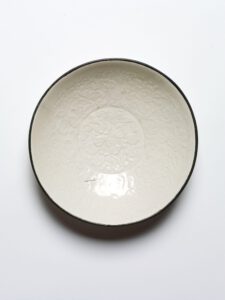
A Jin Phoenix Dish Sold at Christie's
A Jin Moulded Ding Ware Phoenix Dish was sold at Christie's Hong Kong on 30th of May 2022. Sold For HKD 730,800.
A Ding Dish Sold by Robert McPherson Antiques.
A Ding Dish, Song or Jin Dynasty c.1050 - 1234.
From the Collection of Mr and Mrs Guy-Jones.
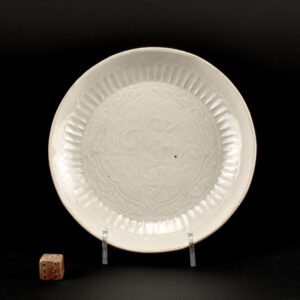
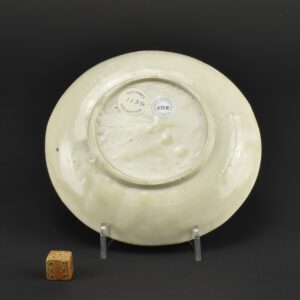
Nicholas de la Mare Thompson (1928-2010).

Nicholas de la Mare Thompson, the grandson of the author Walter de la Mare spent his career in publishing. He started at Nesbit where he was editor of the Janet and John series of children’s books but not all of his career was so safe. He wrestled with W.H. Smith over the content of Madonna’s raunchy Sex book on behalf of Paul Hamlyn’s Octopus Group and defeated Margaret Thatcher over Spycatcher. He could not bare dogma or hypocrisy.
It was hardly surprising that as a committee member of the O.C.S. he had his own ideas. He read and could recite great swaths of the articles of the Society, he used this not to attack but to stimulate debate. He approached the Society in the same way as he approached his understanding of Chinese ceramics, by stripping it down and starting again using clear empirical thinking. He was very concerned the Society was open to all and was run for the benefit of all members.
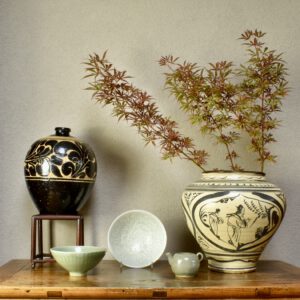
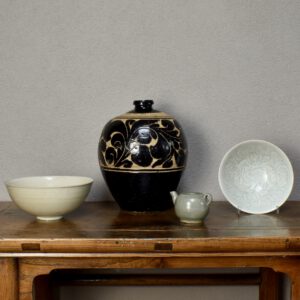
Nicholas came from a family of collectors, his love of oriental ceramics was broad but his focus was on early monochromes, especially those from the Song dynasty. He bought what he loved, what he thought had merit, not what was said to be good, and certainly not anything because it was fashionable. He didn’t have a stamp collectors’ approach, filling in the gaps of pre-existing ordered collection, rather he would react to an object, feeling it was right for his collection. Sometimes he wasn’t sure if it was right for his collection or not. He would then “borrow” pieces and live with them, other times he would ask his wife Caroline, who’s eye he trusted, if he should keep the piece or not. He was amused because I was often able to know if he would keep a piece before he did. We discussed “pots” endlessly, he loved to talk about ceramics with a wide variety of people and enjoyed the company of others on O.C.S. trips as well as in discussion groups or anywhere else. Later on he combined his love of Chinese ceramics with his love of books by extending his library to include rare early books, he used these to trace the development of collecting and scholarship in the 19th and early 20th century. He was fascinated by earlier scholarship, what was not understood but also what they understood, and we have lost. He was always reading and wanted to know more right up to the end, he didn’t see impending death as a barrier to knowledge or indeed collecting. The week before he died he questioned, if only for a second, whether it was too late to buy another pot for the collection. He concluded it was not, he was a true collector.
Nicolas died on the 25th of April 2010 at the age of 82 after living with cancer for two years. He leaves behind his energetically supportive wife Caroline and his three children. He was a kind, gentle and incredibly civilised man with a very sharp mind and dry sense of humour, he was passionate about the Society, its aims and its members. He was an incredibly supportive and thoughtful friend and will be missed very much.
